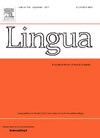理解触觉挪威手语翻译中的描述
IF 1.3
3区 文学
0 LANGUAGE & LINGUISTICS
引用次数: 0
摘要
涉及触觉手语(TSLs)的口译环境要求将视觉和听觉渠道的信息传递到触觉形态。TSL被定义为视觉手语(SL)的触觉适应,主要用于在以后的生活中经历视力丧失的聋人手语。在这些调整中,对话者的身体上产生了一些符号,创造了一个更大的符号空间,通过触觉方式更容易接近。我们把产生在对话者身上的TSL符号称为“TSL行为”。此外,视觉语言的一个显著特征是描述,其中符号通过“演示”一个参考物或事件来视觉地表示意义。描述也存在于对外汉语特殊语言中,尽管其使用研究有限,特别是在口译的背景下。因此,本文旨在:i)研究在涉及挪威触觉手语(TNTS)的口译环境中,口译员如何调解描绘结构;ii)描述描述如何在口译员和聋哑盲人的身体上表达;iii)提供一个模型来定义TNTS口译中发现的各种类型的“触觉”。本文章由计算机程序翻译,如有差异,请以英文原文为准。
Understanding depiction in tactile Norwegian sign language interpreting
Interpreting settings involving tactile signed languages (TSLs) require the conveyance of information from visual and auditory channels into the tactile modality. A TSL is defined as a tactile adaptation of a visual signed language (SL), primarily used by deaf signers who experience vision loss later in life. In these adaptations, some signs are produced on the body of both interlocutors, creating a larger signing space that is more easily accessible through the tactile modality. We refer to TSL signs produced on the body of the interlocutor as “TSL haptices”. Moreover, one distinctive feature of visual SLs is depiction, where signs visually represent meaning by “demonstrating” a referent or event. Depiction also exists in TSLs, though its use has received limited study, particularly in the context of interpretation. As a result, this paper aims to: i) investigate how interpreters mediate depicting structures in interpreting settings involving Tactile Norwegian Sign Language (TNTS), ii) describe how depiction is expressed on the bodies of interpreters and deafblind individuals, and iii) provide a model that defines the various types of “haptices” found in TNTS interpreting.
求助全文
通过发布文献求助,成功后即可免费获取论文全文。
去求助
来源期刊

Lingua
Multiple-
CiteScore
2.50
自引率
9.10%
发文量
93
审稿时长
24 weeks
期刊介绍:
Lingua publishes papers of any length, if justified, as well as review articles surveying developments in the various fields of linguistics, and occasional discussions. A considerable number of pages in each issue are devoted to critical book reviews. Lingua also publishes Lingua Franca articles consisting of provocative exchanges expressing strong opinions on central topics in linguistics; The Decade In articles which are educational articles offering the nonspecialist linguist an overview of a given area of study; and Taking up the Gauntlet special issues composed of a set number of papers examining one set of data and exploring whose theory offers the most insight with a minimal set of assumptions and a maximum of arguments.
 求助内容:
求助内容: 应助结果提醒方式:
应助结果提醒方式:


